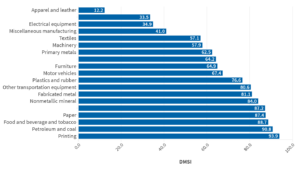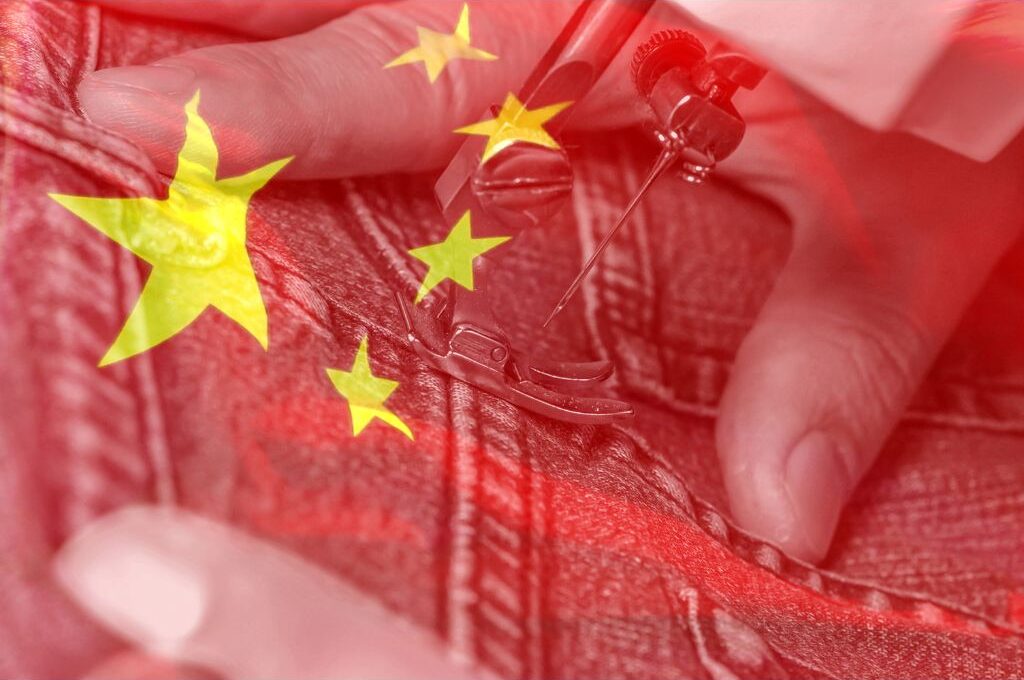China apparel manufacturers that left for Southeast Asia due to rising costs and geopolitical risks are supposedly heading up north. They are returning, with companies citing worker production and labor skill sets as the reasons why, Bloomberg reported on Oct. 30.
Amid mounting global economic uncertainties and weakening consumer demand, many are discovering that finding alternative production hubs comes with its own challenges, Bloomberg reported. “That mature ecosystem, established over decades in China, not only ensures competitive price points, but also delivers stable quality at mass production that’s hard to copy,” Laura Magill, the global head of sustainability at footwear brand Bata Group, said. “I can’t think of another place that can do the quality, the quantity and the price as well as China.”
Most of this should come as no surprise. The U.S. gets most of its apparel from China. While this has shrunk over the years to favor Bangladesh, Vietnam, and one or two countries in the Central American Free Trade Agreement, most of the clothes on our backs were made by Chinese workers in a mainland China factory. There are reasons for this.
For the last 20 years, companies have partnered with or set up shop in China to export goods to the U.S., clothing being one of many such items. China invested in its port cities and infrastructure so much so that no country in the world has the port capacity like China. Why would India, Indonesia, or Brazil invest in such things when companies in the U.S., Europe and Japan were all decisively sticking with China. There was no indication at all that the trend would change until Trump was elected and imposed tariffs on roughly half of China’s exports.
Some apparel is tariffed under Section 301 at rates ranging from 7.5% to 25% on average. The weaker Chinese yuan has erased approximately 13% of its value against the dollar since January 2018.
According to the International Trade Commission, some sectors of the economy saw reinvestment and reshoring of goods once tariffs were imposed. Clothing was not one of those sectors the ITC examined for its report published in March.
Pettis Makes a Point
Michael Pettis, a senior fellow at the Carnegie Endowment and author of the book “The Great Rebalancing”, a CPA member must-read to understand the concept of balanced trade, said on Wednesday that China’s attraction is also due to credit, corporate taxes, labor skill sets and wages, and of course its infrastructure, which is unmatched in the developing world. He said all of these things boil down to subsidies afforded to industry, distorting the competitive landscape.
“We can recognize the sheer extent of these subsidies, paid for directly and indirectly by households, and when we understand that, like other surplus economies, China’s manufacturing competitiveness is the obverse of its weak domestic consumption,” he added.

Apparel is the least locally produced subsector of the U.S. economy, according to CPA’s Domestic Market Share Index. Figures are from the first quarter of 2023.
China’s government, led by calls by Xi Jinping, has for years tried to get the locals to spend more. They do. But nothing like the West. The excess is all dumped here, keeping China’s economy alive.
China accounts for a sizable 18% of global GDP, and accounts for roughly 13% of global consumption. But China alone is 32% of global investment and another 30% of global manufacturing. These three seemingly-separate data points are in fact reflections of the same set of economic imbalances – China makes for the world not just because the world asks them to, but because the Chinese aren’t consuming enough of it, or any of it for that matter.
“This is also why manufacturers will remain in China in spite of rising geo-political tensions,” Pettis wrote on Elon Musk’s social media platform, X, formerly known as Twitter. “Given its mature ecosystem, even as wages rise it will still be cheaper to manufacture in China. This isn’t good for China in the long term, but it is hard to change.”
“Running a permanent trade surplus, as China does, is a way of taking production away from the rest of the world and exporting unemployment to other countries,” said CPA chief economist Jeff Ferry. “China won’t change unless importers force it to change. This is why deficit countries like the U.S. should make balanced trade a priority and implement policies to force us to balance trade, which will require us to increase domestic production to pay for our imports.”
China’s Outpost in Vietnam
Lin Feng, a businessman who owns apparel factories in and around China’s southern city of Guangzhou, told Bloomberg that his factories mainly exist to make clothes for U.S. and European clients. He said an economic slowdown has impacted new orders, with U.S. customers stuck with high inventory. He left Vietnam and shifted his focus back to Guangzhou, one of China’s most potent port cities.
“There’s no point talking about expansion or overseas shifts now,” Lin told Bloomberg. “With weak demand, low labor costs and tariff exemptions are meaningless.”
Bloomberg noted that Vietnam is the No. 1 importer of fabric from China that is turned into clothing bound for the U.S., and elsewhere. One source told Bloomberg that clients placing orders with factories in Vietnam are shying away from longer-term contracts, worried about weak global demand. This may be temporary. The biggest takeaway about Vietnam’s connection to the China supply chain is that the Southeast Asian nation has positioned itself to be the Asian nation of choice for those leaving mainland China. Multinationals and Chinese companies have all set up shop there over the years across economic sectors. But where apparel is concerned, if Vietnam is a hub for Chinese fabrics, made from cotton, then Made in Vietnam clothing may be connected to forced labor in Xinjiang. The U.S. government has banned cotton and cotton derivatives, like clothes, from the U.S. market unless the importer can prove the cotton was not from a banned entity, or was not harvested by forced labor.
University and nongovernmental organization reports on forced labor by Chinese companies are often ignored, Eric Choy, a Customs executive director for trade remedy law enforcement said Oct. 27 at the Pacific Coast Council’s Western Cargo Conference.
“We don’t leverage those reports as the Bible,” Choy said. “Everything for the agency has to do with a person in the loop, whether it’s an import specialist” or analysts who have “to make that ultimate decision based upon their assessment of what they’ve looked at in the report or to the technology.”
Choy said Sheffield Hallam University reports on the Uyghurs that discuss forced labor of Muslims in Xinjiang had to be verified by CBP, adding that CBP has not gone through the lists of companies the university said were engaged in hiring prison labor or people forced to work certain jobs against their will.
If Companies Are Leaving China, Where Are They Going, And Why?













